Why might it be that school closures continue? How could adults sit by and watch what occurs to their progeny? Why is there not a greater active expression of concern? The answers are many and also easy. Humans attend to their own wants and needs first and foremost. “Not in my backyard” equates to I want nothing to do with you or your problems. Indeed, the axiom is as an admonition, “Stand back!” A conversation on the subject can stroke the fires and ignite a feud. In the case of Chicago school closings, even citizens within the affected communities can give up their rights and the reasons to state their angst. Customarily the consensus is “you cannot fight City Hall.” And if you could where would you find the time.
Economic slavery stops many of us from doing as we would were it not for the veracity that food and shelter for our children comes first! Safety too. If only the Mayor of Chicago were not able to capitalize on the current condition in our cities. Only when the cameras are on do I smile and say I care.
How do these attitudes affect our young and their neighborhood schools? Horribly! Little ones learn to fear the streets, be frightened at the site of policepersons who cannot and do not always protect them. Our youth come to think that going to school is dangerous…and it is…in some ways just as the Safe Passage program is. Please peruse and ponder. What do you say, do, why and will our children be truly safe as they pass through neighborhoods that are not theirs?
CPS Safe Passage Program: West Englewood Welcoming — And Skeptical
Originally Published at The Chicago Sun Times. September 8, 2013 02:40AM
“Who y’all with?” she hollers to the little boys and a girl, catching up with them. “How old are you, little lady?”
The little lady turns out to be 4; her escorts are her brothers, ages 5 and a very-small-for-his-age 8.
The rookie officer — Hampton is the only name she’ll give — asks their address, their mother’s name and, satisfied with the replies, she asks the eldest child: “Can you help her cross the street and make sure you get across safely?”
Hampton tells her partner the kids live very close. They’ll pass a crossing guard at the next corner and community workers who also are taking part in the Safe Passage Program. Turns out their mother does come to give them a ride, but misses them by minutes.
“Thank you very much,” a popular teacher says to the officers, “and please stay until the end of the year.”
For the most part, O’Toole loves the extra security and attention. Perhaps that’s for good reason. During the last school year, the Safe Passage route now drawn to O’Toole, 6550 S. Seeley Ave., had more shootings on it than any other in the city, according to a Sun-Times analysis, with 13 people shot and three murdered.
But the O’Toole community is totally skeptical about how long the attention will last.
Especially since Mayor Rahm Emanuel spent part of the first day of school at O’Toole Elementary, walking a little girl to school along the new Safe Passage route. Police, firefighters, city inspectors and community workers were out in full force that day, Aug. 26. A police helicopter hovered overhead during the mayor’s visit. A streets and sanitation worker even painted fire hydrants as children headed to school.
By the second week of school, the mayor is gone, as is the overhead chopper.
The police remain. Chicago Fire Department trucks sit a few blocks south, and some men in city-inspector printed shirts pair up with yellow-vested community workers along this stretch of Damen.
O’Toole’s Safe Passage workers also are all in place, unlike at least two other vendors who reportedly have had problems retaining staff. For $10 an hour, the workers do a few hours in the morning around the school that starts at 8:45, sticking around until 10, and after the 3:45 dismissal until at least 4:30 for workers and as late as 6 p.m. for police — so far.
“So far” is the mantra of the adults outside the school.
Prompted by concerns of kids crossing dangerous gang lines, Safe Passage is the program hatched by CPS and the Chicago Police Department to secure kids’ most likely paths to schools with community workers, officers and other city staffers. The routes are marked by reflective yellow signs; the program previously around high schools about doubled to include paths to schools that received children from a record number of schools closed in June. O’Toole got a whole school added to its annex building, now sharing its campus with the Montessori School of Englewood Charter.
CPS says they’re committed to Safe Passage for the whole year at least. The city has diverted hundreds of police and other workers to cleaning up and guarding the paths.
On the Seeley side of the school one morning this week, two pairs of officers walk the block toward each other, cross paths and keep on. Patrol cars swarm the streets around O’Toole, frequently passing each other. Unmarked cars pull over, too, carrying plainclothes police.
One man walking north on Damen demonstrates his feelings about the police by responding to an officer’s cheery wave from a patrol car with a hard stare, a fixed lip and an upturned middle finger.
Residents remain skeptical.
“So far, so good,” said Leon Walker, an O’Toole grad, current special education aide and father of an O’Toole kindergartner, who has wanted extra help outside the school for years. Inside the building is fine, but sometimes the neighborhood heats up, he said.
“We always wanted a squad car up here to clear the perimeter,” he said after school as he patrolled the grounds until all the kids left — “especially at dismissal.”
“The more security the better,” he said.
“I don’t know how much longer they’ll be out here.”
Leo Allen Jr., another O’Toole grad who currently has a child in nearly every grade of the elementary school plus older kids in high school, too, jaws with his father over how long.
Sitting on his porch across from O’Toole’s back doors, the younger Allen predicts the extra support will last until mid-September; the elder a whole year.
“I think it’ll be up for a little while and then will die down,” the son said of the Safe Passage program. Friday and Saturday nights are when things heat up though, not Tuesday mornings so “That’s when Mr. Mayor should be here.”
Such a high saturation of police — typical, maybe, of Michigan Avenue — is new to the neighborhood, his wife, Karen Strouder said.
“They don’t normally walk around here,” she said. “If something happens, you see them here and there.”
And police or no police, she still waits on her porch, watching her kids cross the street to school or coming home.
Another mother on her porch at 66th and Damen watching three of her children run across a field onto school property worries that all the police will have another effect:
“I think they’re making kids scared of school,” she said.
The Rev. Johnny Banks Sr., of A Knock at Midnight, which manages O’Toole’s workers, hasn’t had any of the problems reported on a route in Roseland where a number of workers reportedly didn’t show on the second day, or by another Far South Side vendor that had 13 of its 26 workers abruptly quit. Many of his workers are manning their very own blocks where they live; the lady just outside the school’s main doors has a daughter inside, he said proudly.
“We know ‘em,” he says of the O’Toole kids. “We’ve been around for years.”
CPS says it’s committed to keeping Safe Passage in place. The community operators have signed a yearlong contract to man the routes, district spokeswoman Becky Carroll said. Police are staying put while they’re needed, too, though,
CPS’ office of safety and security — which runs the whole program — works every day with the on-the-ground partners to make sure staff are in the right places.
The Chicago Teachers Union questions who’s standing on those corners. CPS says they’ve been screened but has not publicized any of the details.
“These people interact with our kids,” said John Kugler, a CTU field representative. “The union always appreciates, welcomes any help we can get to make sure our kids are safe and make sure our kids get a good education. We love that stuff, but the point we’re always concerned with is who’s doing it, are they properly trained, do they have the tools to do their job. We’re about helping the kids long-term, not something slapped together with temporary workers.
“That’s where we feel it’s dangerous.”
The day started with Kameshia Haywood, stationed at 66th and Damen, helping children from at least three schools — O’Toole, Harper High School and children who take the Damen bus to Clara Barton Elementary School. Sharing the intersection with a crossing guard and another yellow-vested worker, Haywood catches lots of kids coming north on Damen who cut across a mowed vacant lot at 66th.
Justin Garner, stationed at the easternmost post on 71st Street, where a particular patrol car makes a U-turn to continue his path along the rest of the route, says he barely sees any kids.
And Samona Walker, the wife of Leon Walker, who has volunteered inside the school their daughter attends, encourages the late children to move it.
“You’re a little behind this morning,” she says after the bell to a little girl in red who’s normally prompt.
“Mmm-hmm,” the girl replies.
“Run on up, run run run,” Walker says.
Well after 9 a.m., Walker’s still on her radio.
“If you see another one,” she says to a colleague, “tell ‘em to put some pep in they step.”
Email: lfitzpatrick@suntimes.com
Twitter: @bylaurenfitz
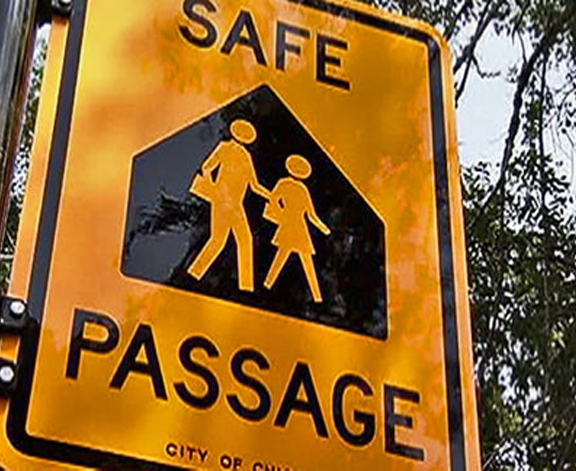







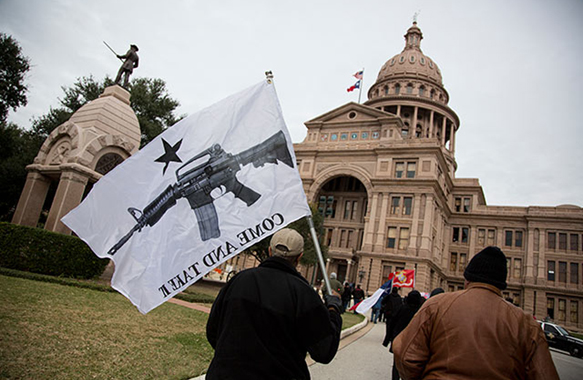
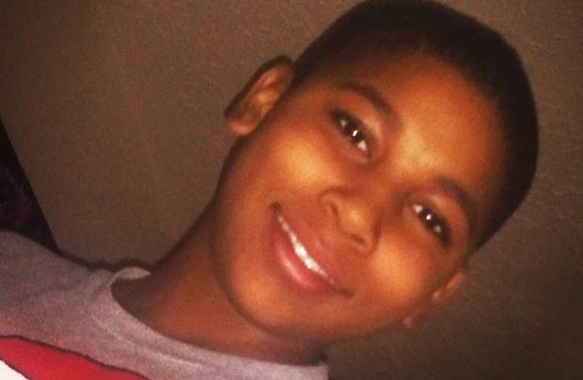
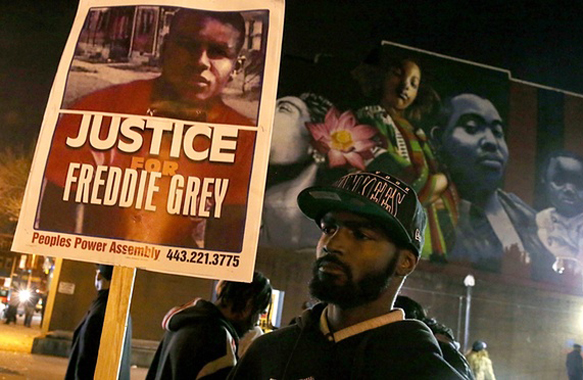
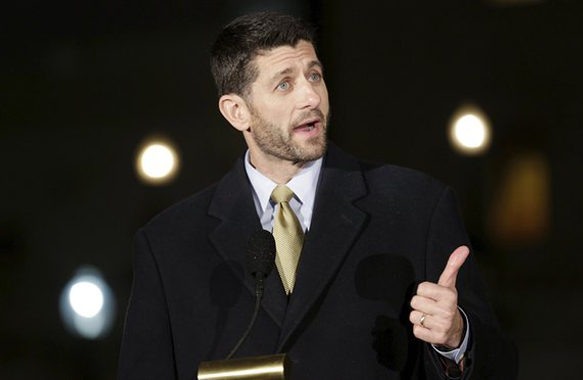

Leave A Comment